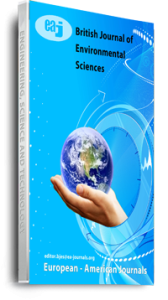Globally, the ecological status of protected areas has declined every year due to anthropogenic factors. This problem is also clearly observed in the Ethiopia control hunting area, although, there are no well- documented scientific studies. Therefore, the current study was conducted to determine land cover change, current wildlife status and their habitat utilization of selected wildlife in Abaseba Demero Controlled Hunting Area (ADCHA). Both lines transect and point count sampling methods was used to collect quantitative data on species. ERDAS 2015, Arc Gis10.3.1a, and SPSS version 23 were used for satellite image processing, map preparation to generate land use land cover change and for analyzed data respectively. The ADCHA has undergone changes in land cover and ecology. Forests and bush lands have been reduced by 16% and 4% respectively from the original state, while the agriculture land, bare land and built-up area have increased by 7%, 5%, and 7% compared to the original state in the past 19 years. According to the current study, 63 Mountain Nyalas, 42 Menelik’s bushbucks and 3 Leopards were recorded in the study area. Those animals were more common in forest habitats and bush land. The relationship between land cover type and population distribution was ((n=199 df =40, p=0.000)), indicating a close relationship species and habitat types. Based on the above findings, the ecological status of the controlled hunting area was not immediately threatened, except for Menelik’s bushbuck population trend. But man-made pressures are a serious problem that requires effective conservation measures.
Citation: Cherenet T. (2022) Ecological Status of Abasheba Demero Controlled Hunting Area: Implication for Conservation of Protected Area, British Journal of Environmental Sciences, Vol.10, No.6, pp.,73-84
Keywords: Abasheba Demero controlled hunting area, Threats, anthropogenic, land use land covers change, population status

